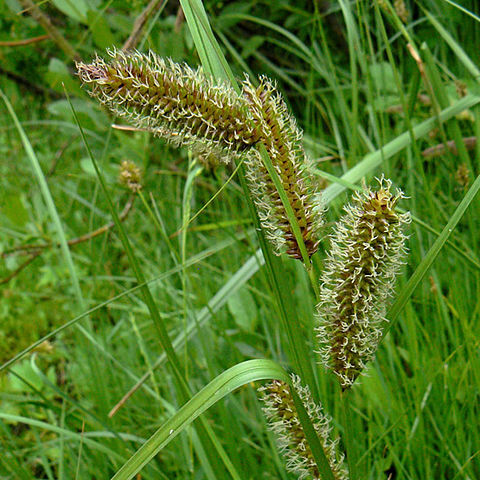Plants not cespitose. Culms 20–150 cm. Leaves: basal sheaths red-brown or brown; sheaths of proximal leaves glabrous, fronts with indistinct spots, veinless, apex U-shaped; blades usually amphi-stomic, papillose on both surfaces. Inflorescences: proximal bract longer than inflorescence. Spikes: erect; proximal 2–6 spikes pistillate; terminal (1–)2–4 spikes staminate. Pistillate scales red-brown to purple-brown, apex obtuse or acute, awnless. Perigynia ascending, veinless, somewhat flattened, loosely enclosing achenes, ellipsoid or obovoid, dull, apex obtuse or acute, papillose. Achenes not constricted, glossy. 2n = 72–80.
A sedge. These grow in clumps and have grass like leaves and solid stalks. It keeps growing from year to year. It has underground scaly runners. The stems or stalks are 25-60 cm high. They are slender and have 3 sharp sides to their triangular shape. The leaves are in three ranks and long and narrow. They can be 1 m long and 6 mm wide. The edges have fine teeth. The flowers and seeds are in several nodding spikes.


